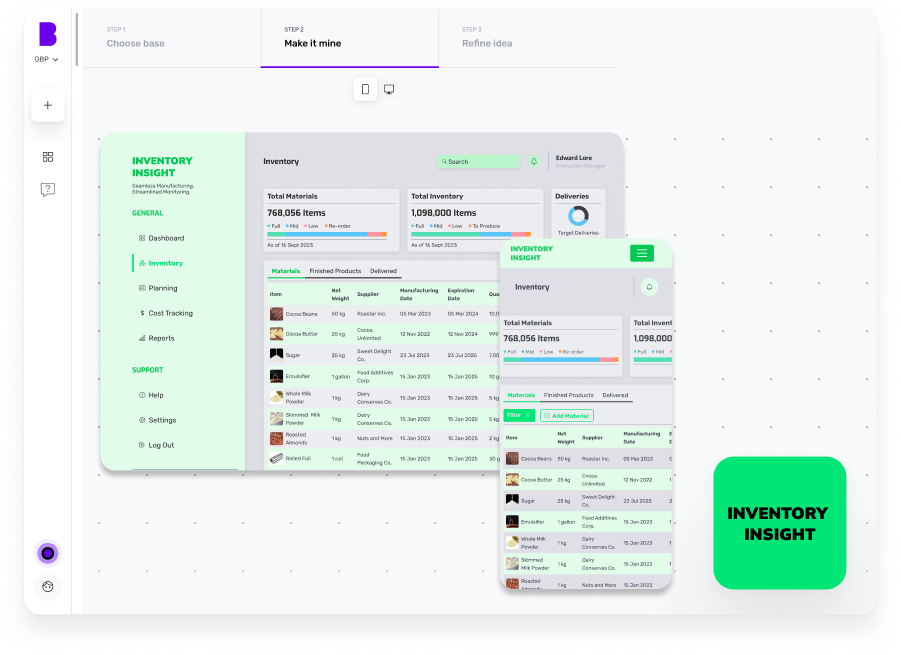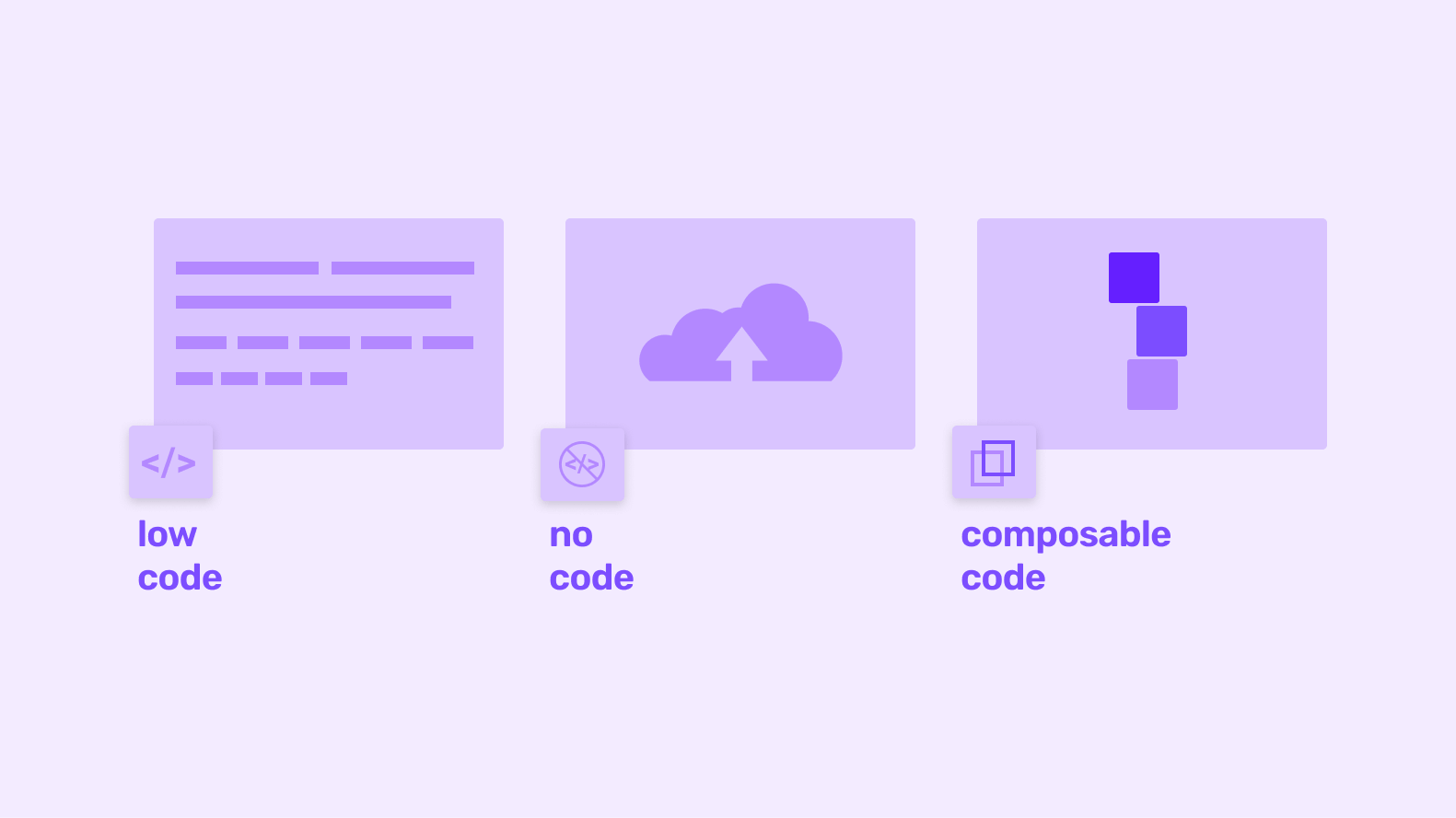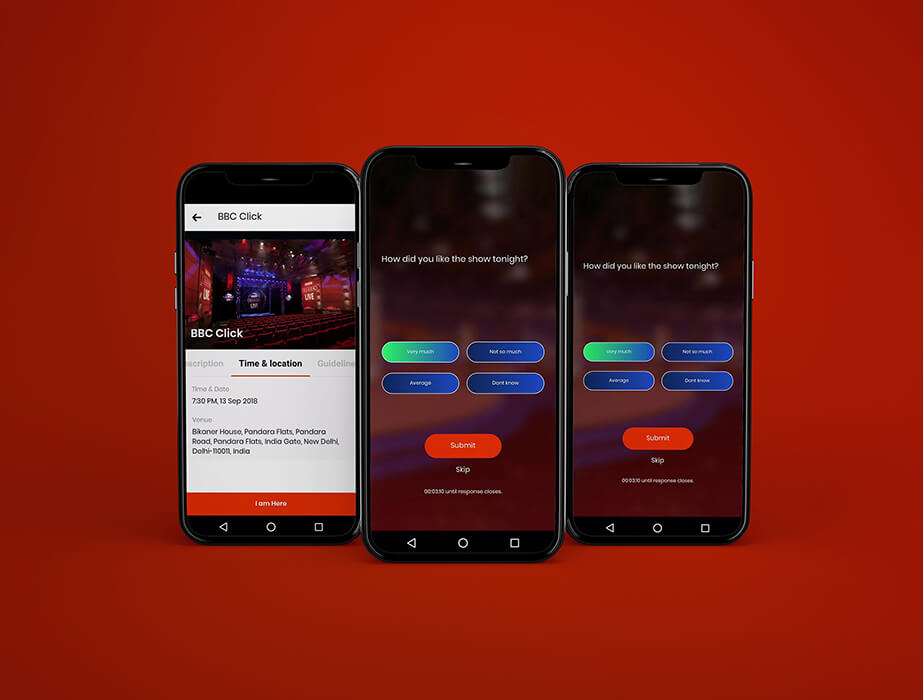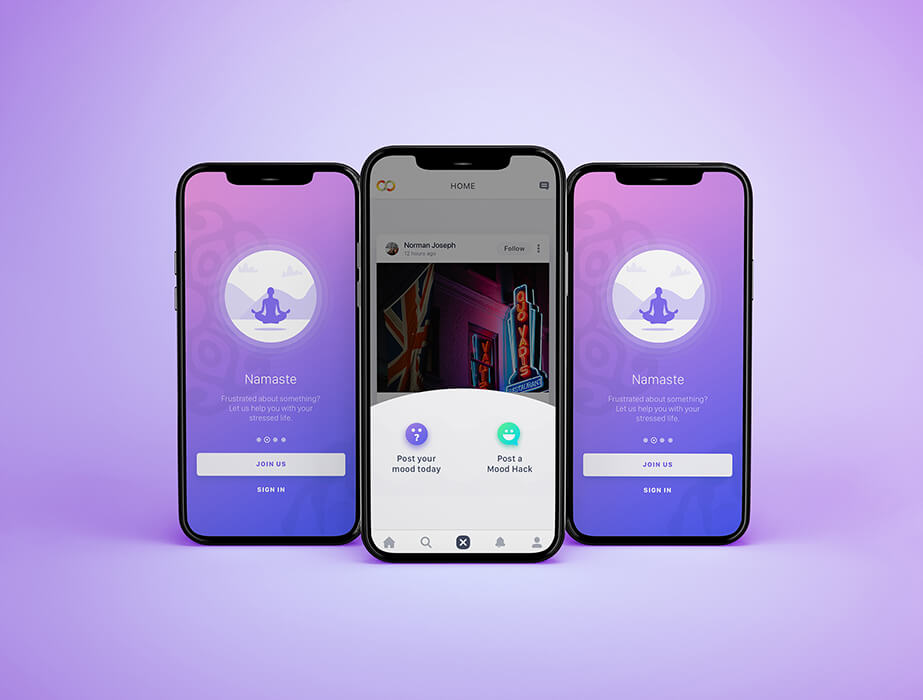As entrepreneurs and businesses turn to software to drive business growth, no-code and low-code (NCLC) software development platforms have gained traction.
NCLC platforms allow founders to neatly side-step the challenges of traditional software development and get up and running quickly.
But quickly, what are they?
No-code development platforms aim to help people make an app without any coding knowledge at all. An app, exactly as you want it, constructed via a slick UI. No-code apps can handle backend architecture, visual design elements and app logic to make the app you pictured in your head. That’s the promise, at least.
Low-code platforms also promise to make app development easier. They cater to users with some technical background, who need more flexibility. Low-code platforms have two main user groups: “citizen developers” with broad business skills and some coding knowledge; and strong developers who want to build faster.
So even though the two platform types sound almost the same, they have distinct use cases.
In this article, we’ll discuss the scope of the capabilities of no-code and low-code software development platforms.
Understanding no-code app makers
A no-code software development platform allows users to build applications without programming knowledge by leveraging a visual, drag-and-drop interface.
Users select pre-built components like forms, buttons and data tables, arranging them on a canvas to design the application’s layout. They then configure settings to define component properties and behaviours through intuitive, non-technical interfaces.
How does it all work?
Built-in connectors make it easy to link components to databases or application programming interfaces (APIs), while visual tools like flowcharts define app logic for actions like form submissions or button clicks. Users can test their app within the platform before deploying it, and updates are simple with the same visual interface.
Key features of no-code platforms include:
- An intuitive visual interface
- Extensive libraries of reusable components
- Seamless system integrations
- Complete elimination of manual coding.
That makes them well-suited for developing simple business applications, automating repetitive tasks and creating prototypes, minimum viable products (MVPs) and basic web or mobile apps.
The top selling points of no-code platforms are speed, accessibility, cost-effectiveness and ease of use.
Naturally, they can’t do everything. Let’s look at their limitations:
No-code limitations
We’ll look at the limitations of no-code platforms in terms of technical limitations – what they can do – and use-case limitations – who they are suited to.
Technical Limitations of No-Code Platforms
- Limited customisation – No-code platforms offer pre-built components and templates, restricting advanced customisation options for unique business requirements.
- Scalability challenges – Applications may struggle to handle high traffic, complex workflows or large datasets due to platform constraints.
- Performance constraints – Since no-code platforms hide backend processes from the user, performance optimisation options are limited compared to custom-built applications.
- Vendor lock-in – Many platforms use proprietary frameworks, making migration to other systems difficult if business needs evolve.
- Security & compliance issues – Some platforms may not provide the necessary security controls or compliance certifications required for industries with strict regulations.
- Integration restrictions – While many no-code platforms offer integrations, they may not support all third-party systems or require workarounds for complex data flows.
Use-case limitations of no-code platforms
As no-code platforms can only make fairly simple software and apps, they fall short when software requirements are more complex. These include:
- Complex applications – No-code tools may not support advanced features like AI, custom algorithms or real-time processing.
- Enterprise-grade software – Large-scale systems requiring high availability, multi-user roles and extensive backend logic may outgrow the capabilities of no-code solutions.
- Gaming & high-performance apps – Graphics-intensive applications, such as video games or real-time simulations, require coding expertise beyond what no-code offers.
- Highly regulated industries – Businesses in finance, healthcare and government may require greater control over security, compliance and data handling than no-code platforms allow.
- Deep system integrations – Applications requiring deep integration with legacy systems, custom APIs or proprietary software may face limitations in connectivity and functionality.
We can map those software limitations to the types of business with software needs that'd struggle with no-code.
- Businesses innovating in tech – Because no-code platforms use pre-built components, it’s unlikely that any company will be able to innovate in the tech space with a no-code app.
- Large enterprises with high scalability needs – Corporations handling massive data volumes or high-traffic applications may struggle with the performance constraints of no-code platforms.
- Regulated industry professionals – No-code solutions might not suit organisations dealing with sensitive data, such as hospitals, banks, and government agencies, due to strict security, compliance (e.g., HIPAA, GDPR, PCI-DSS) and data governance measures.
- Product teams requiring extensive customisation – Businesses that want complete control over user experience, design and backend logic may find no-code platforms limiting.
Understanding low-code app makers
Low-code app builders also promise low technical barriers to entry. But what level of coding skill is needed, and what additional capabilities does it enable?
Low-code solutions typically require a foundational understanding of coding, such as scripting or basic programming logic, rather than deep software engineering expertise.
This group can include business analysts or tech-savvy professionals with good general grasp of technical things. Often known as “citizen developers”, they can combine rudimentary technical knowledge with strong business acumen to build impactful software.
As it gets harder to recruit tech talent, “citizen developers” are becoming more useful to organisations. Low-code tools empower non-developers to produce software on par with a software developer working from scratch.
Limitations of low-code platforms
Despite the potential for more complex software, low-code still has its drawbacks. These include:
- Technical constraints – The level of customisation offered is still capped in terms of scalability, performance optimisation and system control.
- Rare ideal user profile – The most effective low-code users need both technical skills and business acumen – as well as a desire to build software – a combination that isn't always easy to find. Business users may struggle with the coding aspects, while developers may find the platform restrictive compared to full coding.
- Vendor lock-in – Many low-code platforms rely on proprietary frameworks, making migration to another system difficult. Businesses risk dependency on a specific vendor’s ecosystem, which can be problematic if pricing, features or support change.
- Security & compliance concerns – Like no-code, low-code platforms may not offer full control over security settings, making them less suitable for industries with strict compliance requirements.
- Long-term maintainability issues – Applications built on low-code platforms may become difficult to maintain as business needs evolve. Over time, reliance on platform-specific features can lead to technical debt, making future modifications more complex than if the application were built with traditional development.
But what if there was a way of combining no-code skill levels with outcomes even beyond low-code solutions?
That’s where composable software comes in.
Composable software: the best of both, and more
A composable software platform lets users build apps and software from modular components and features. Modular components are standardised parts that can be combined to construct a more complex structure.
Just like a LEGO set, these components can be assembled, rearranged and scaled in response to changing business needs.
Like no-code and low-code, composable software solutions simplify development. But unlike no-code and low-code, modular software allows each component to operate independently. This is a gamechanger for customisation, control and adaptability.
Use-cases of composable software platform
Composable software platforms suit a broad range of needs:
- Enterprise-level applications – With composable software platforms, large organisations can build scalable, modular applications. This allows for greater design flexibility and rapid response to changing business needs.
- Simple applications – Composable platforms are ideal for simple apps and software too, as price is linked to complexity. So simple software is cheaper.
- Complex business systems – Composable software platforms can handle intricate systems, such as ERP (Enterprise Resource Planning) and CRM (Customer Relationship Management), by allowing businesses to mix and match pre-built and custom modules for tailored functionality.
- Specialised software solutions – Industries with niche requirements, such as healthcare, finance and manufacturing, benefit from composable platforms by assembling specialised software components that meet regulatory, operational and technical constraints without building from scratch.
Closing thoughts
Ultimately, the choice between no-code, low-code and composable software development depends on the client's needs.
Let’s review:
Aspects | Low-code | No-code | Composable |
Definition | Minimal coding, visual interfaces | No coding required; purely visual tools | Assembling reusable components |
Technical knowledge required | Yes | No | No |
Automatic code generation | Generates back-end and front-end code based on visual designs | Completely abstracts the coding process | Generates code based on assembled components |
Scalability | Moderate | Limited | High, easily update or add components |
Flexibility | Moderate | Limited | High, focus on flexibility |
Ease of use | Moderate | High | High |
Learning Curve | Requires advanced tech knowledge | Requires moderate tech knowledge | Very low to no-tech knowledge required, depends on the complexity of software |
Cost | High to moderate pricing because of advanced tech knowledge and coding requirement | Moderate as minimal to no coding required | Lowest because of initial investment in architecture and design, but long-term savings through reusability |
Builder.ai is a composable software platform that helps you build your software efficiently. We:
✅ - Assign you a dedicated project manager, who keeps all stakeholders on your software project aligned and on track — and you never need to speak to a software developer or write a single line of code
✅ - Speed up development time by giving you access to a comprehensive library of reusable features, fitted together by AI
✅ - Give you upfront costs and competitive timelines so your project stays under control
If that’s something you’d like to explore, please get in touch 👇
Create robust custom software today
100s of businesses trust us to help them scale.
Book a demoBy proceeding you agree to Builder.ai’s privacy policy
and terms and conditions

Malcolm is a seasoned content manager and writer, skilled at pulling the juicy, digestible morsels of information from raw data to serve up readable, approachable and witty content. He has worked in macroeconomics, corporate data, sales acceleration and UX design, guiding content strategy, developing tone of voice and yes, writing a lot of blogs along the way. A freelancer, Malcolm has a longstanding relationship with Builder.ai.










 Facebook
Facebook X
X LinkedIn
LinkedIn YouTube
YouTube Instagram
Instagram RSS
RSS


